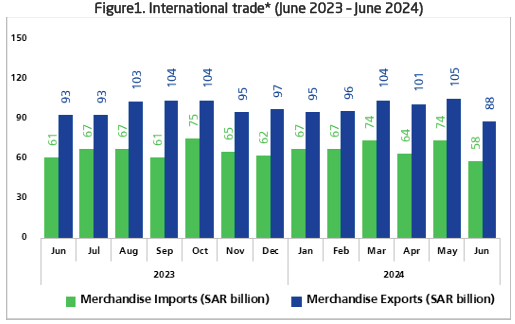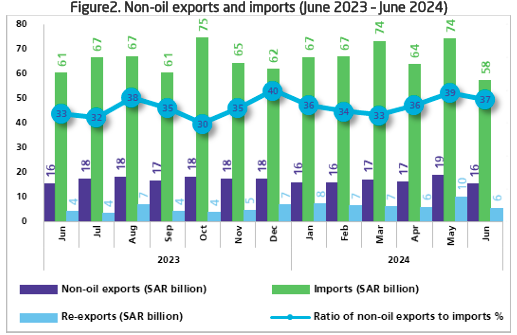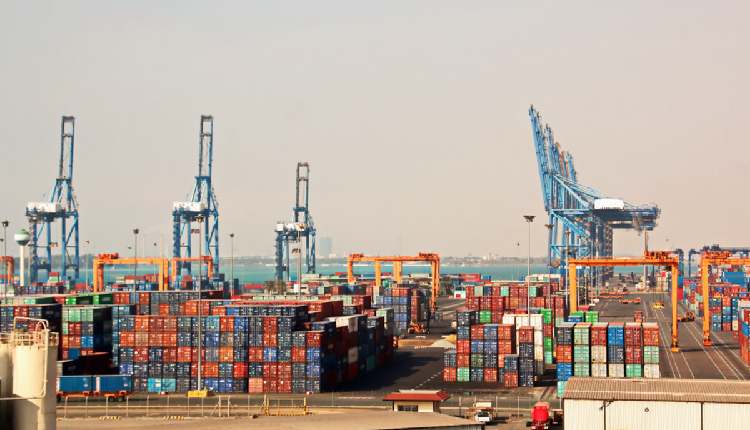Saudi Arabia’s non-oil exports, including re-exports, rose by 7.3 per cent in June compared to June 2023, while national non-oil exports, excluding re-exports, saw a modest increase of 0.5 per cent. Re-exports surged by 30.9 per cent during the same period. However, overall merchandise exports declined by 5.8 per cent due to a 9.3 per cent drop in oil exports, reducing the share of oil exports from 78.4 per cent to 75.4 per cent of total exports.

Imports decreased by 5.1 per cent in June 2024, leading to a 7.0 per cent reduction in the surplus of the merchandise trade balance. Compared to May 2024, merchandise exports fell by 16.4 per cent, non-oil exports including re-exports decreased by 26.4 per cent, imports dropped by 22.5 per cent, and the trade balance surplus shrank by 1.9 per cent.
The ratio of non-oil exports to imports improved to 37.4 per cent from 33.1 per cent a year earlier. Chemical products, which made up 27.7 per cent of non-oil exports, and plastics, rubber, and their products, which constituted 25.7 per cent, were among the top non-oil exports. On the import side, machinery and electrical equipment led at 24.7 per cent of total imports, followed by transport equipment at 11.0 per cent.

China remained Saudi Arabia’s largest trading partner, receiving 16.6 per cent of the Kingdom’s merchandise exports and accounting for 20.9 per cent of its imports. Other significant trade partners included Japan, South Korea, and the United States.
King Abdulaziz Sea Port in Dammam was the primary entry point for imports, handling 27.2 per cent of the total, followed by Jeddah Islamic Sea Port and King Khalid International Airport in Riyadh. These five key ports collectively accounted for 76.1 per cent of Saudi Arabia’s imports.
Attribution: GASTAT Non-oil exports in June 2024
Subediting: M. S. Salama



